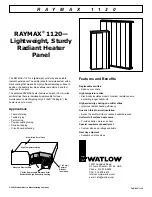
30
1. DESCRIZIONE DEI COMPONENTI
FR
FR
600
400
800
1000
1200
0
200
Q (
ℓ
/h)
0
1000
2000
3000
4000
KS (W/°C
)
ti = 90 °C
ti = 70 °C
ti = 50 °C
HE2V 500
Serpentin inférieur
500
400
600
700
800
900
1.000
1.100
1.200
0
100
200
300
Q (
ℓ
/h)
0
1000
2000
3000
4000
KS (W/°C
)
ti = 90 °C
ti = 70 °C
ti = 50 °C
HE2V 750
Serpentin inférieur
Q (
ℓ
/h)
0
1000
2000
3000
4000
KS (W/°C)
300
300
400
500
600
0
100
ti = 90 °C
ti = 70 °C
ti = 50 °C
HE2V 500
Serpentin supérieu
300
400
500
600
700
800
0
100
200
Q (
ℓ
/h)
0
1000
2000
3000
4000
KS (W/°C
)
ti = 90 °C
ti = 70 °C
ti = 50 °C
HE2V 750
Serpentin supérieur
Q (
ℓ
/h)
0
1000
2000
3000
4000
KS (W/°C)
150
200
250
300
350
0
50
100
HE2V 200
ti = 90 °C
ti = 70 °C
ti = 50 °C
Serpentin supérieu
Q (
ℓ
/h)
0
1000
2000
3000
4000
KS (W/°C
)
200
250
300
350
400
450
500
550
0
50
100
150
HE2V 300
ti = 90 °C
ti = 70 °C
ti = 50 °C
Serpentin supérieu
200
250
300
350
400
450
500
0
50
100
150
Q (
ℓ
/h)
0
1000
2000
3000
4000
KS (W/°C)
ti = 90 °C
ti = 70 °C
ti = 50 °C
HE2V 200
Serpentin inférieur
300
400
500
600
700
800
0
100
200
Q (
ℓ
/h)
0
1000
2000
3000
4000
KS (W/°C
)
ti = 90 °C
ti = 70 °C
ti = 50 °C
HE2V 300
Serpentin inférieur
L'échangeur thermique des serpentins fixes
La puissance thermique d'un serpentin, c'est-à-dire la puissance (W) que ce dernier fourni à l'eau du ballon, se détermine par le biais des diagrammes de
la puissance spécifique KS (W/°C) indiqués ci-après:
1. DESCRIPTION BALLON







































